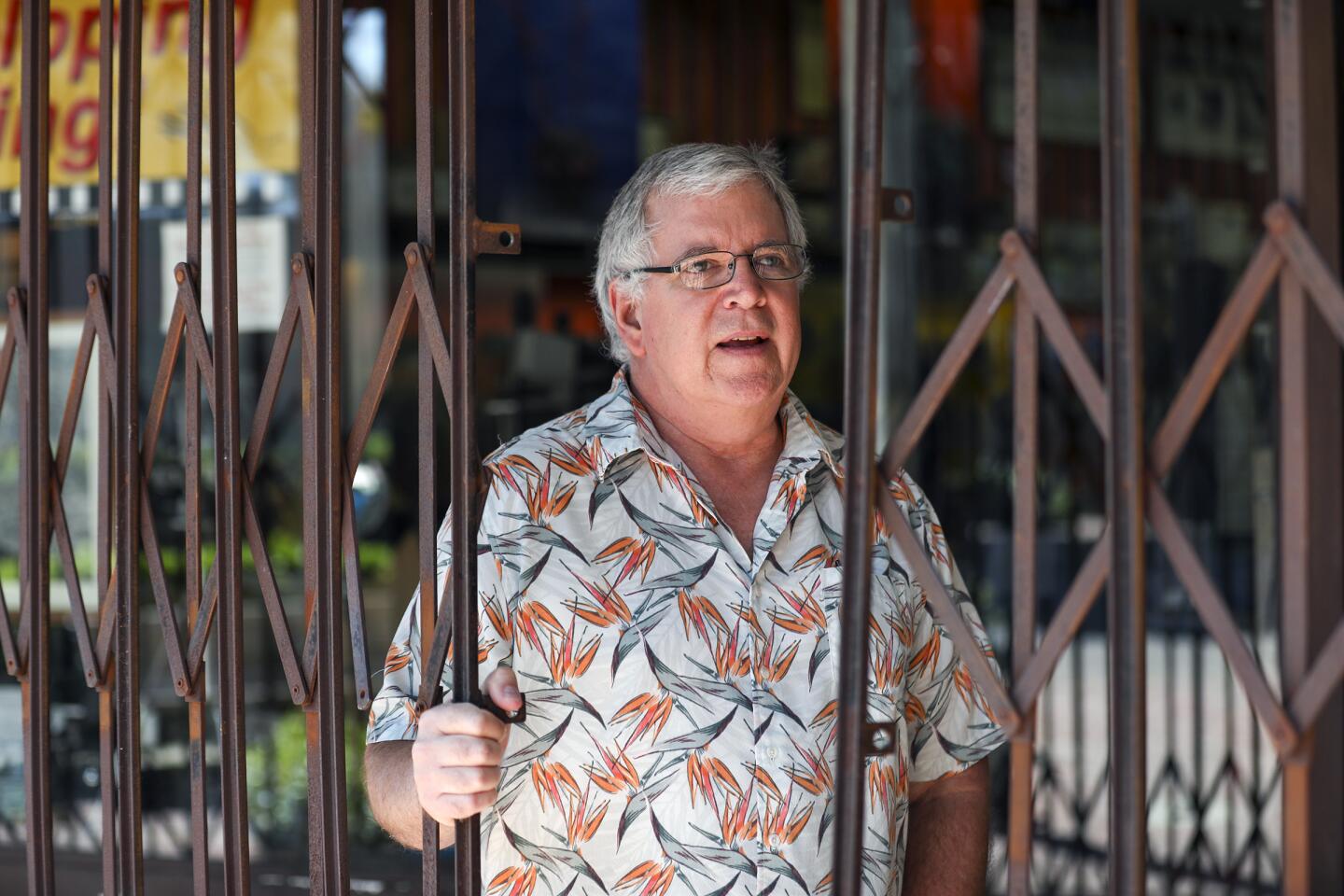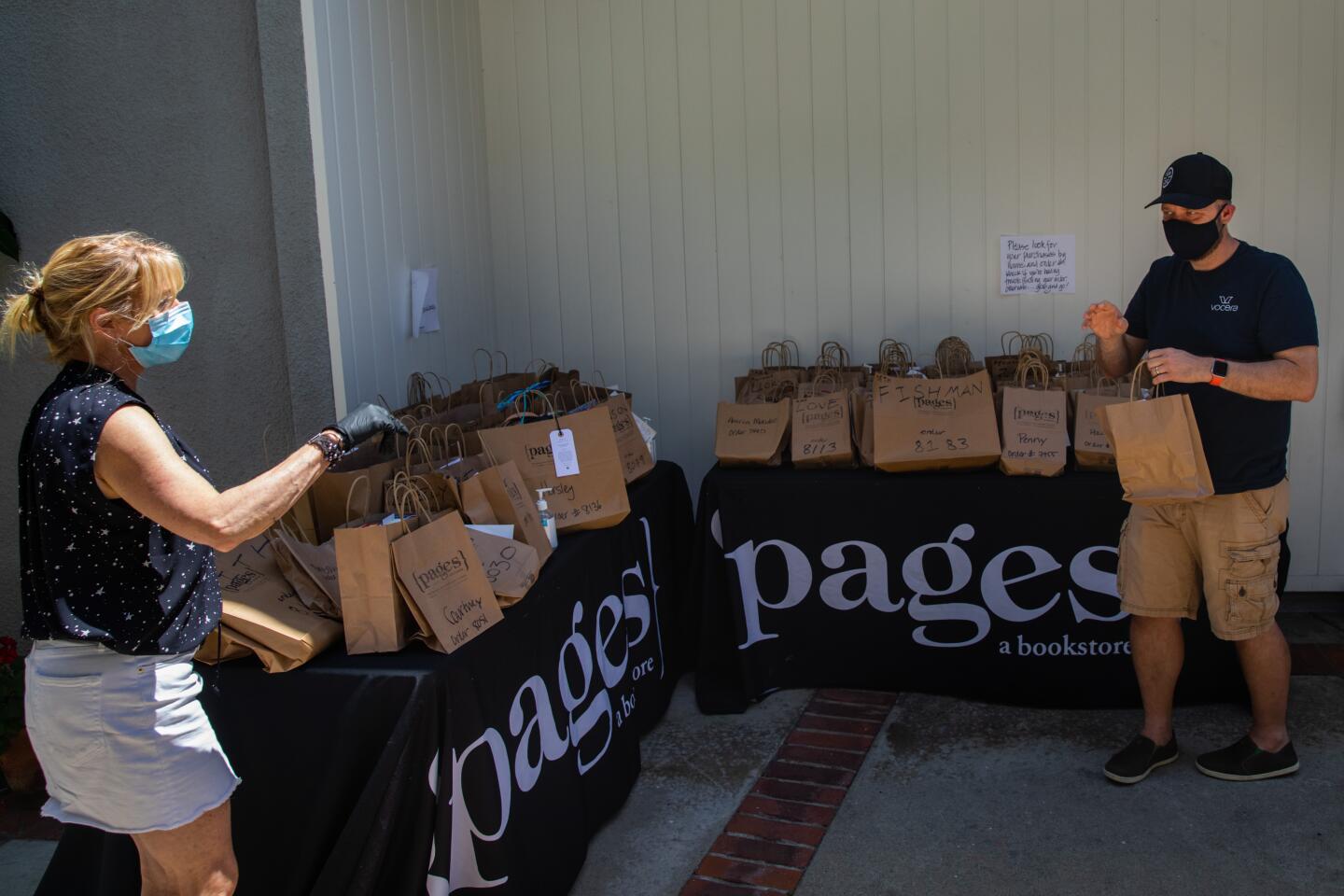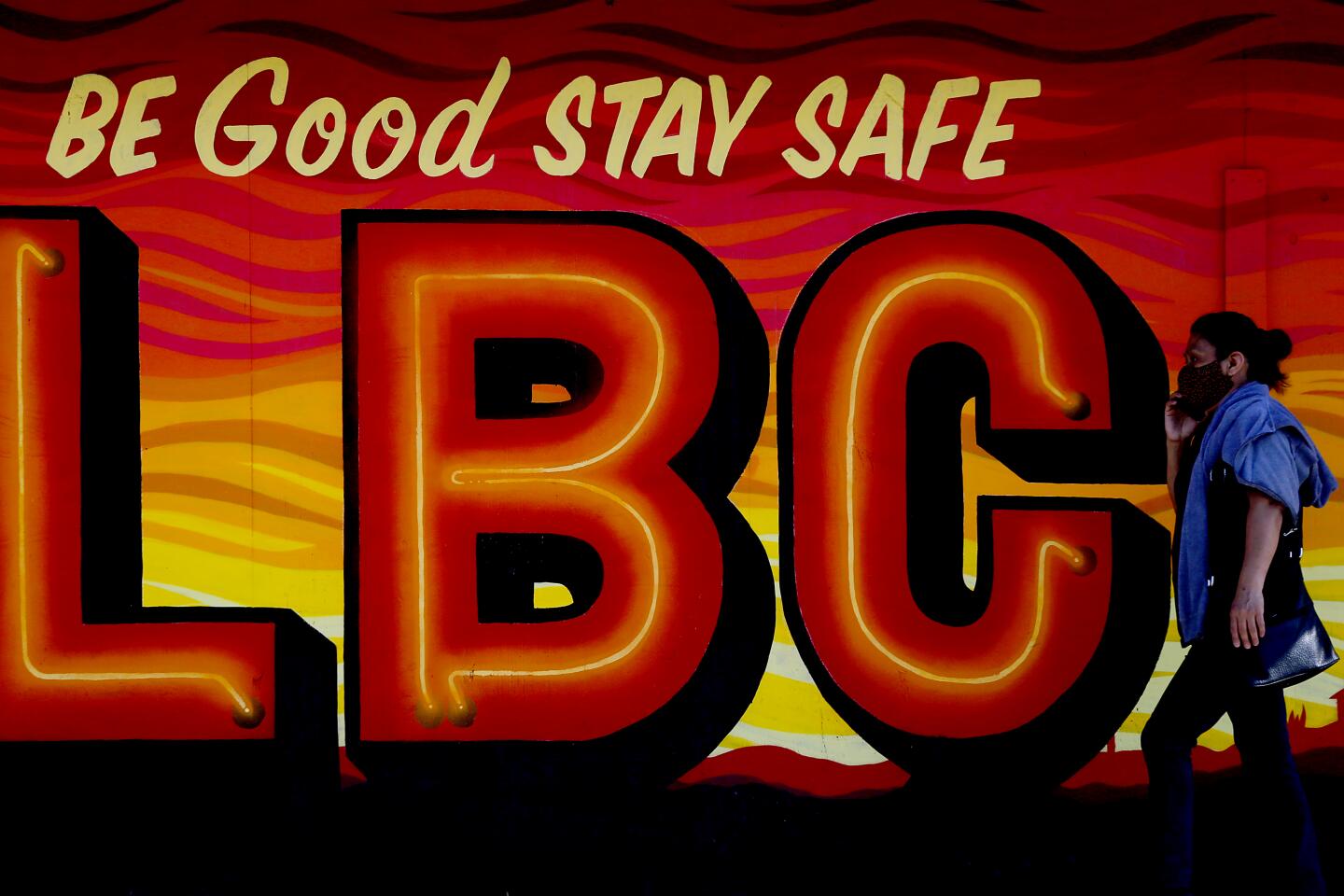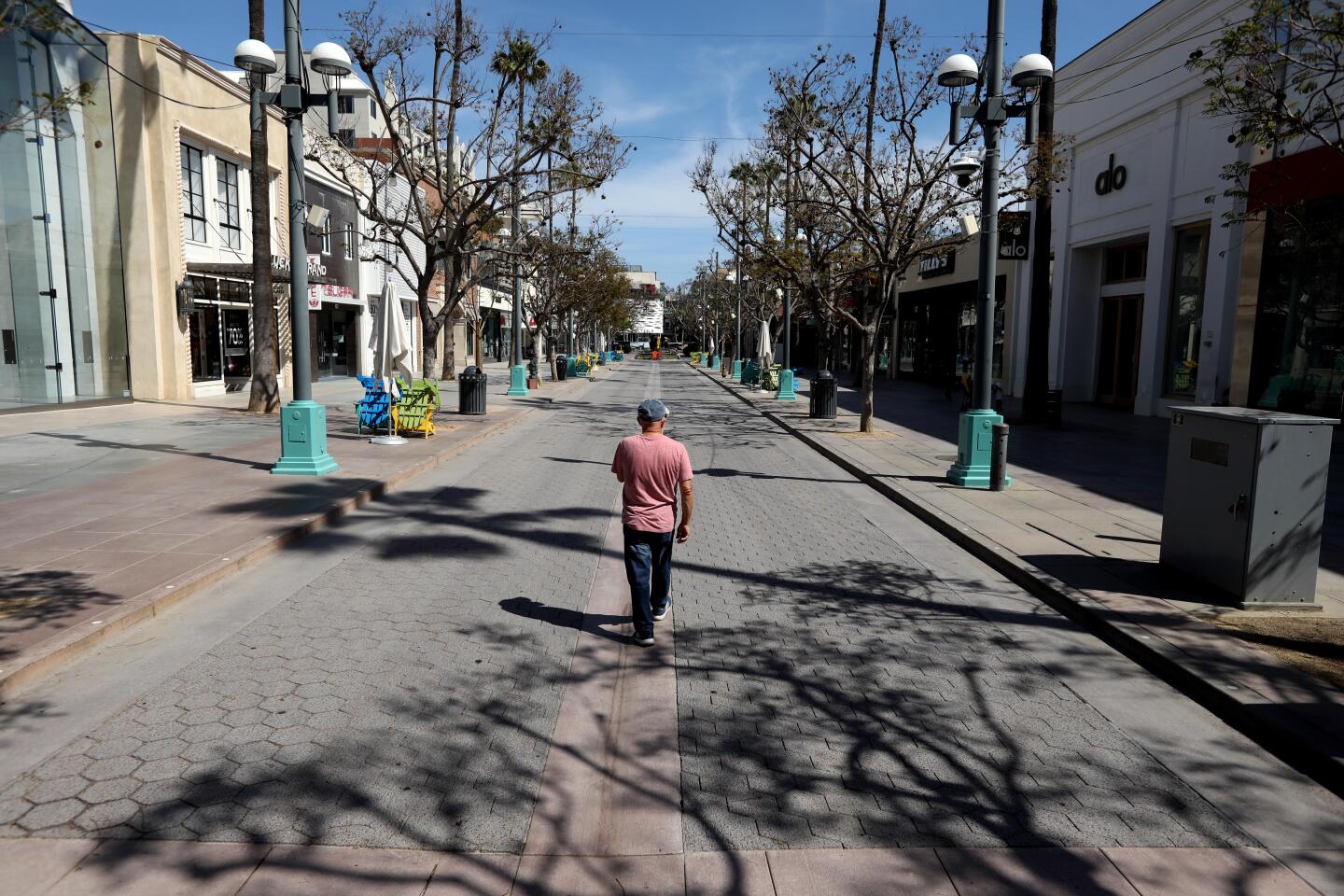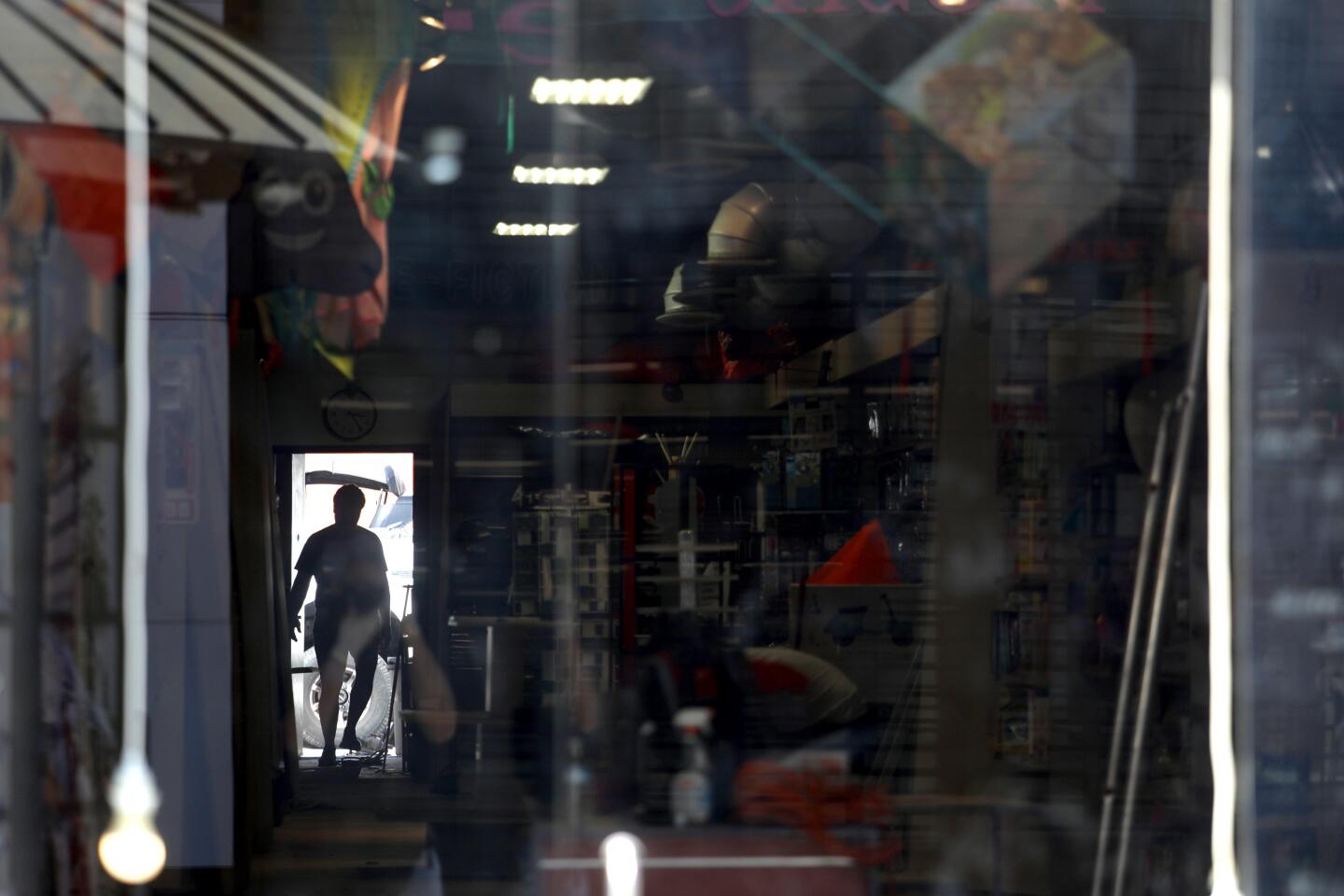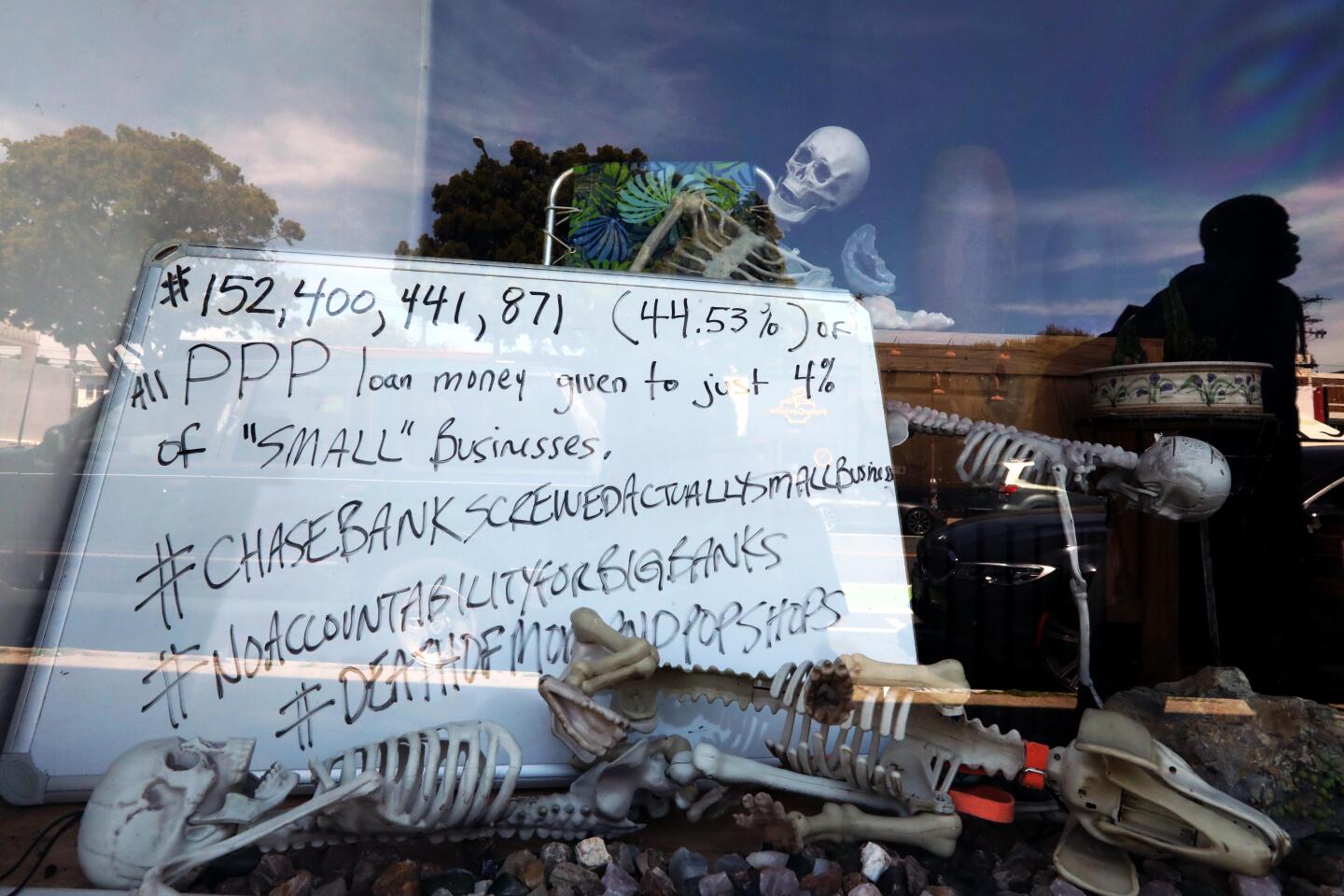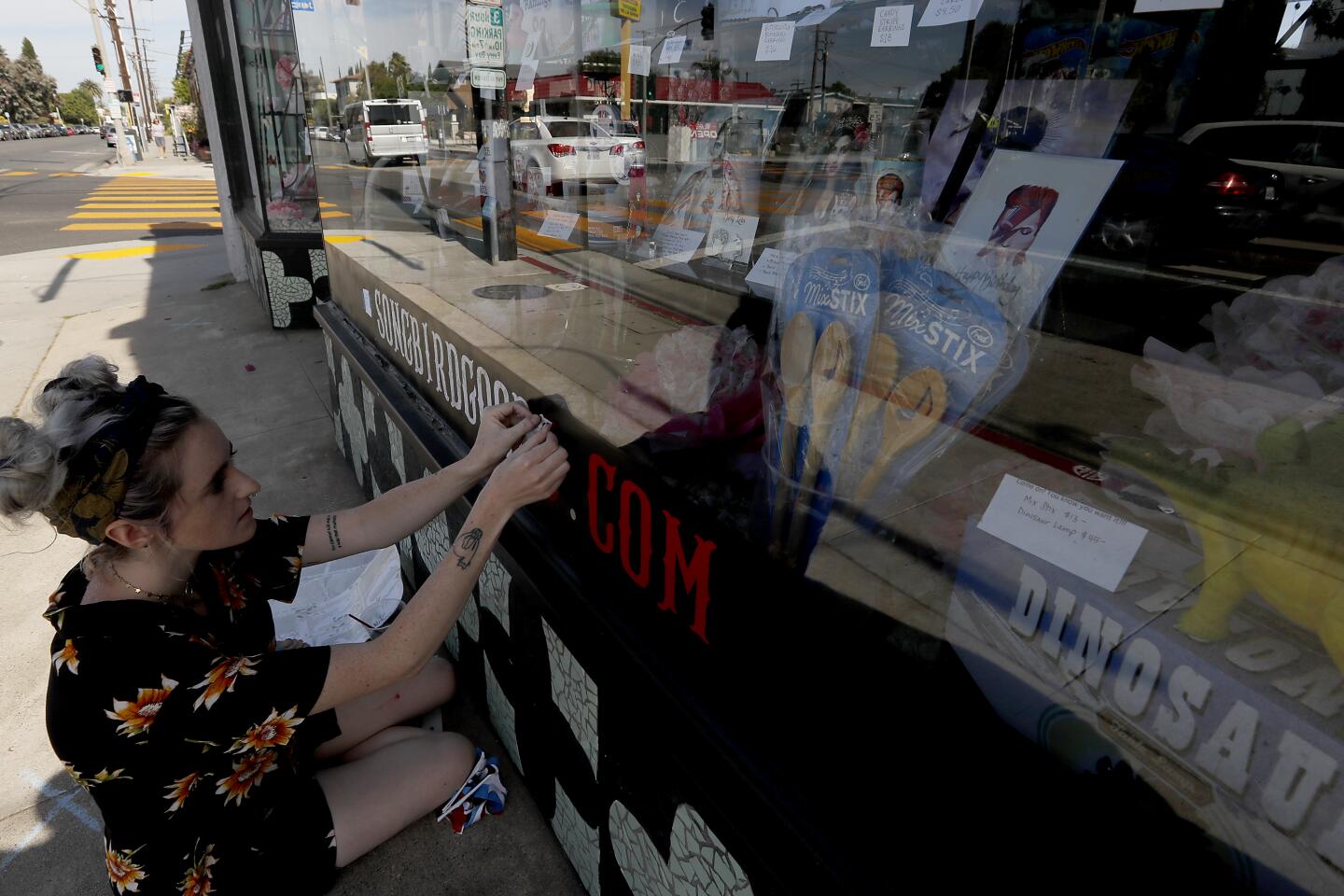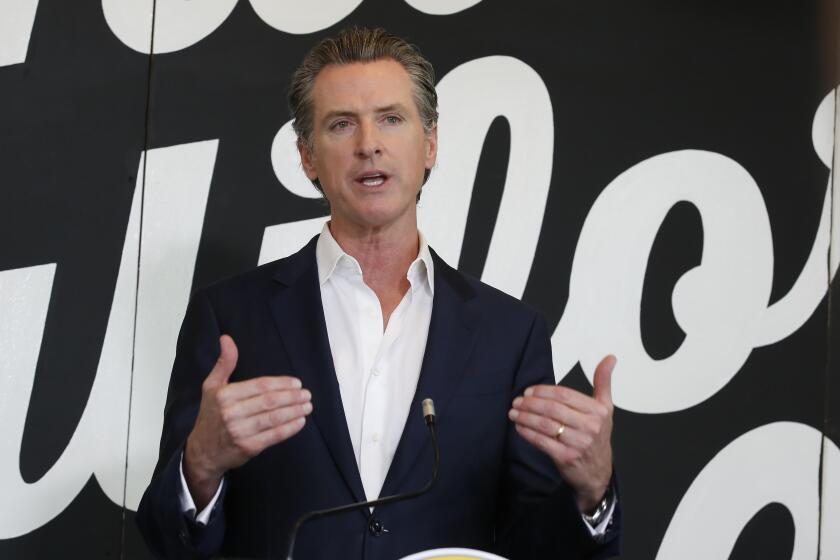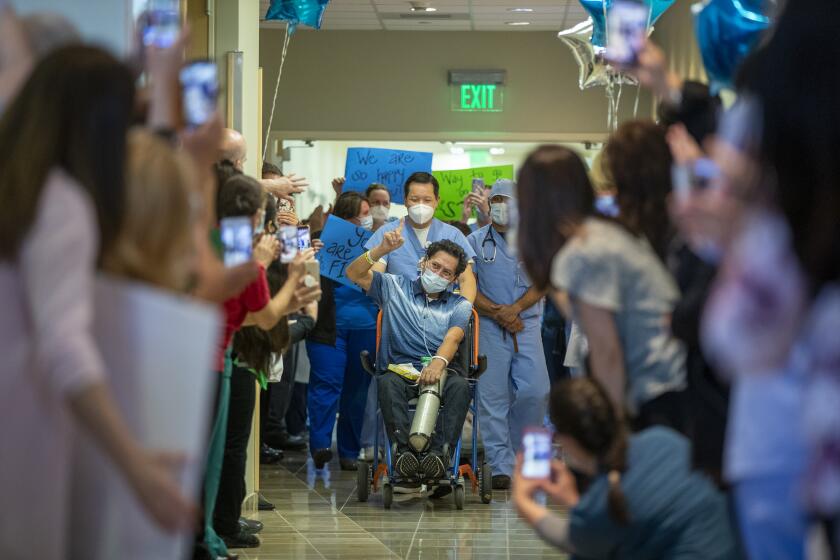Coronavirus plunges California into worst budget deficit in state history

California’s government faces a $54.3-billion budget deficit through next summer according to an analysis released Thursday by advisors to Gov. Gavin Newsom, marking the largest projected fiscal hole in state history and raising the possibility of deep spending cuts or substantial new tax revenues to make up the difference.
The estimate accounts for both a rapid erosion of tax revenues and a growing need for health and human services programs. While it measures the gap between revenues and expenditures based on projections made by Newsom in January rather than existing funds, the assessment nonetheless reflects a record-shattering collapse of the state’s economy, one created in just a matter of weeks by the fast-moving COVID-19 pandemic.
“This is a global pandemic,” Newsom said. “And there’s not an economy around the world that has substantively, at least, been immune.”
Newsom’s budget team forecasts a $41.2-billion drop in tax revenue compared with their estimates from just four months ago. Most of that — $32.2 billion — would appear in the fiscal year that begins in July. Current year tax revenues, according to the report, are expected to miss the mark by $9.7 billion, even though most of the state’s budget year had already passed by the time the virus became an immediate concern in March.
In total, the projected deficit represents 37% of general fund spending approved by lawmakers last year. The shortfall is equivalent to three years of state funding for the University of California and Cal State University systems combined.
“When you see those numbers, they should get your attention,” Newsom said Wednesday during a midday event providing an update on the coronavirus crisis.
As tax revenues plummet, government expenses are projected to skyrocket. The fiscal report released Thursday assumes some $13 billion in higher state costs due to the pandemic, with a combined $7 billion in higher-than-expected caseloads for programs such as Medi-Cal, which provides free healthcare, and CalWorks, the state’s welfare assistance program. As much as $6 billion in expenses are assumed to be the result of the state’s COVID-19 response.
Democratic legislative leaders are likely to ask for even more to help the state’s neediest residents. Assemblyman Phil Ting (D-San Francisco), chairman of the Assembly Budget Committee, said he’d support a state-funded extension of enhanced unemployment benefits that could last into 2021. The goal, he said, would be to keep those Californians from having to rely on a variety of other social services programs.
“While we would have a short-term budget hit, it would have a much larger budget benefit,” Ting said.
The decision to release the dire estimate early — Newsom won’t present his revised state spending plan to the Legislature for another week — was likely prompted by a desire to calibrate the expectations of lawmakers and interest groups about what lies ahead.
Newsom said earlier this week that bookstores, florists and others can reopen for curbside pickup Friday, unless barred by tougher local restrictions.
“These are going to be some tough decisions. But we will work smarter and be strategic and recognize the fundamental role of government at a time like this,” said state Sen. Holly Mitchell (D-Los Angeles), chairwoman of the Senate Budget Committee.
The response by government officials must come quickly. The Legislature will have less than a month to consider and propose changes to Newsom’s budget before its June 15 constitutional deadline to finalize a plan. But more than most years, that blueprint could need substantial revisions. Revenue collections will take longer than usual, as millions of California taxpayers took advantage of a 90-day delay in filing their income tax returns and paying what’s owed.
Because of that, additional budget actions could be needed in late summer before the Legislature adjourns just before Labor Day.
“I think this budget could be a placeholder for a conversation that they’ll be coming back to later this summer,” said Chris Hoene, executive director of the California Budget and Policy Center, a nonprofit that advocates for programs to help low-income residents.
The impact on K-12 education funding could be especially severe. Schools receive roughly 40% of the state’s general fund revenues and, under a series of complicated constitutional formulas, could see their minimum funding cut by more than $18 billion under the Newsom administration analysis.
These are some of the unusual new scenes across the Southland during the coronavirus outbreak.
“It’s a really frightening number,” said Kevin Gordon, a veteran education lobbyist. “The cuts allowed would eviscerate school budgets,” Gordon said.
And the reductions could come as state officials are asking schools to do more to help children, especially those from low-income families, when it comes to distance learning and provided meals.
In January, with the economy still expanding, Newsom proposed a $222.2-billion budget plan that projected upticks in spending on K-12 schools and healthcare programs. But that plan, introduced less than eight weeks before the governor declared a state of emergency to combat the coronavirus, assumed a steady growth in personal income of 4% a year and continued low unemployment.
Those expectations have vanished. The state has processed more than 4.2 million unemployment claims since mid-March, nearly equivalent to all of the jobs in Los Angeles County. The Newsom administration estimates almost 478,000 jobless claims were filed in just the past week. The state received approval this week for an $8-billion loan from the federal government to cover the rising cost of those benefits.
The role of the federal government in shoring up the finances of California and dozens of other states looms large. House Speaker Nancy Pelosi (D-San Francisco) and other congressional Democrats have suggested a subsidy for state and local governments of as much as $1 trillion. Meanwhile, many of California’s immediate coronavirus expenses could be reimbursed by the Federal Emergency Management Agency.
On Thursday, Newsom said additional help for local and state governments is essential to providing the funds needed for emergency workers who have become ever more vital as the pandemic continues.
“We have to recognize that this moment requires an historic effort of partnership, not just between the governor and the Legislature, but between the states and our federal government,” he said Thursday.
Across Southern California and in the Bay Area, communities are preparing to allow retailers to reopen, with restrictions.
The projected $54.3-billion shortfall is the largest such estimate since the $40-billion deficit predicted by then-Gov. Arnold Schwarzenegger during the Great Recession in January 2009. In 2011, then-Gov. Jerry Brown said the state stared down a $27-billion fiscal hole. The Newsom analysis notes that projected deficits of the past not only were smaller in total dollars, but also constituted a smaller percentage of the general fund than what lawmakers face this year.
A steady uptick in jobs and tax revenues erased the red ink of the past, with some of the money set aside in cash reserves. California voters boosted the maximum size of deposits in the state’s “rainy day” fund in 2014.
The efforts by state lawmakers, led by Newsom and Brown, to sock cash into that reserve fund could help soften the blow. The independent Legislative Analyst’s Office estimated last month that the state’s cash reserves total around $17.5 billion — money that could provide a cushion, but only under a series of strict conditions.
Still, the state has other resources at its disposal — including billions of dollars in special funds and other accounts that could be temporarily accessed — that California leaders in past recessions did not have.
“They were not as well-positioned, because of the fiscal management preceding that, to weather that deficit,” Newsom said in comparing past fiscal crises to this one. “And I think this is a long way of saying this, we’ll get through this.”
More to Read
Start your day right
Sign up for Essential California for news, features and recommendations from the L.A. Times and beyond in your inbox six days a week.
You may occasionally receive promotional content from the Los Angeles Times.




